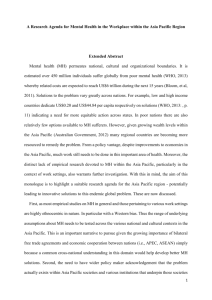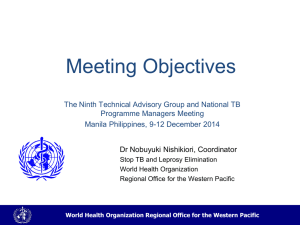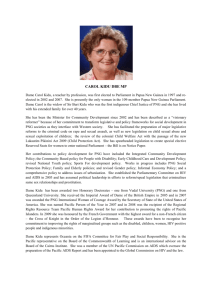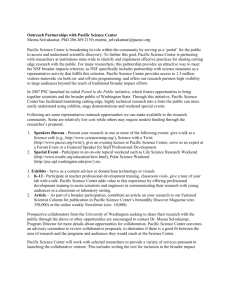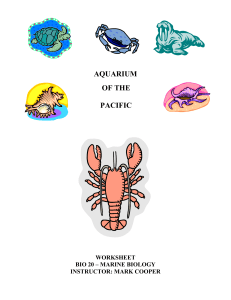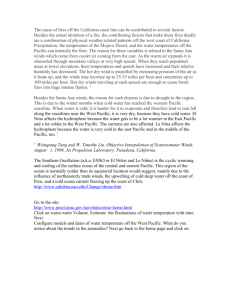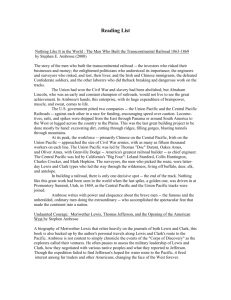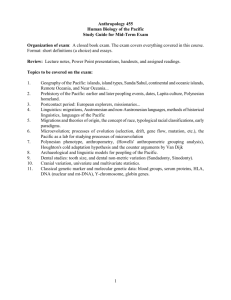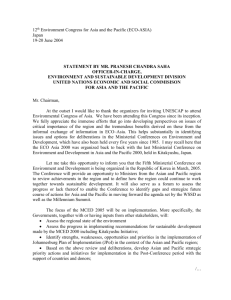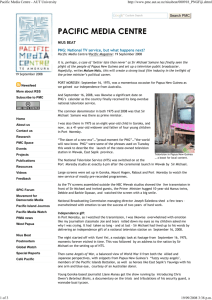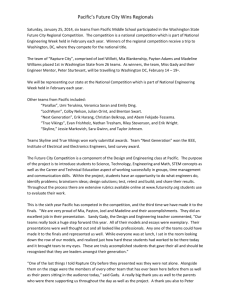PACE NET+ and Innovation in the Pacific
advertisement
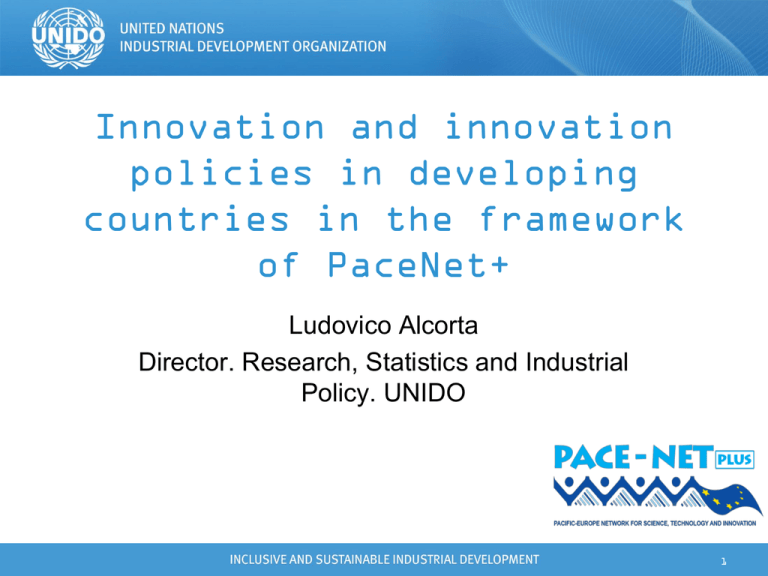
Innovation and innovation policies in developing countries in the framework of PaceNet+ Ludovico Alcorta Director. Research, Statistics and Industrial Policy. UNIDO 1 Outline • • • • • Why innovate Innovation policy in developing countries Innovation policy in the Pacific The role of PaceNet + Final remarks 2 Why Innovate • What is innovation? • Contributes to economic growth and job creation • Leads to improved competitiveness and is a major reason of why growth rates differ at the firm, regional and national level • Helps address social and environmental challenges • Impact of innovation varies depending on the development stage: – Earlier stages, based on incremental/process innovation aimed at adapting foreign technology – Intermediate stage, based on consolidating previous efforts and aims at duplicative and creative imitation and starting local technological capabilities – Late stage, based on domestic generation of technology aimed at establishing a local sustained technological base and a high-tech industry for competitive advantage A3 Innovation policy in developing countries • What is innovation policy? • Innovation policy instruments – Supply side: tax exemptions, subsidies, subsided credit, risk sharing, creation of public research centers, FDI, innovation prizes, technology parks, IPR – Demand side: public procurement • Innovation policy in East Asia – Increase in R&D expenditure and number of engineers – Targeting industries – Centres of excellence • Innovation policy in Latin America – Old: controls on technology transfers, local-content rules, public research and technology centers; – New: tax credits for R&D; public development bank loans; provision of risk capital; stakeholder linkage and coordination; human capital development • Innovation policy in Africa – Creating a close interaction between innovation, technology and education policy – Institutions for promotion of science and technology, Ministries for Science and Technology 4 Innovation policy in the Pacific • Limited R&D and limited documentation in the Pacific • Innovation policy index by Atkinson et al. (2011) including PNG suggests region is very low in ranking: Tariffs, Market Access, FDI and Standards; Science and R&D; ICT; IPR; Domestic Market Competition; Government Procurement. • Need for innovation and innovation policy in: – Themes: renewable energy, marine resources management, climate adaptation strategies, waste management, natural disaster mitigation and sustainable land use; telecommunications and IT regulation – Themes: indigenous systems of knowledge and practices – Issues: universities/domestic private sector linkages, lack of opportunities for scientists; lack of national or regional professional scientific networks or associations; low priority of Science and Technology Policy – Organizations: • Regional bodies on fisheries and agriculture, transport and telecommunications and environment • National level: dedicated scientific research agency – SME innovation 5 PACE NET+ and Innovation in the • Objective: Contribute toPacific tackle global societal challenges • Areas of intervention: – health – agriculture and marine – natural resource use • What is this project component about? – Understanding the factors, mechanisms and obstacles that underlie innovation processes in PICTs – Strengthening EU-Pacific science and technology cooperation and networks through the joint identification, promotion and monitoring of environmentally sustainable innovation – Identifying policy recommendations that will stimulate stakeholder interaction both within the Pacific as well as between the Pacific and the EU • How?: – – – – Assessing innovative competencies in the region and the role of EU in supporting them Identifying areas and niches for potential innovation Generating awareness, disseminating information and validating the niches for innovation Identifying the government policies and support measures required for innovating 6 Final remarks • Innovation is critical to sustainable development, adequately pursuit it provides for sustained growth, social inclusiveness and the preservation of the environment • The Pacific Region is a latecomer to the development of a National Innovation System(s) • The Pacific Region faces unique challenges, in particular related to climate change, the use of indigenous knowledge and their small size • PaceNet+ will be one of the first comprehensive attempts at assessing both the capabilities of the public and private sectors to engage in innovation as well as the extent of cooperation with the EU • PaceNet+ is currently: – Undertaking firm and stakeholder surveys in Fiji and New Caledonia and has scheduled further surveys in PNG – Involved in the EU-Pacific Business Forum held in Vanuatu 7 Thank you! 8



